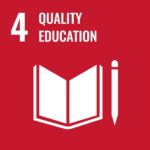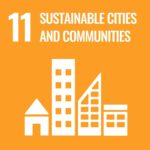Sufficiency Model
Mahidol University has the policy and plan, Sustainability Management Strategy 2020-2023, to promote the creation of an Eco University to drive Mahidol University towards sustainable development.
To achieve this plan, the Physical and Environment Division came up with a Sufficiency Model project to share knowledge in the form of an exhibition, the philosophy of sufficiency economy to the university’s context and using the Environmental Conservation Buildings , Mahidol University, Salaya Campus (as the exhibition’s location).
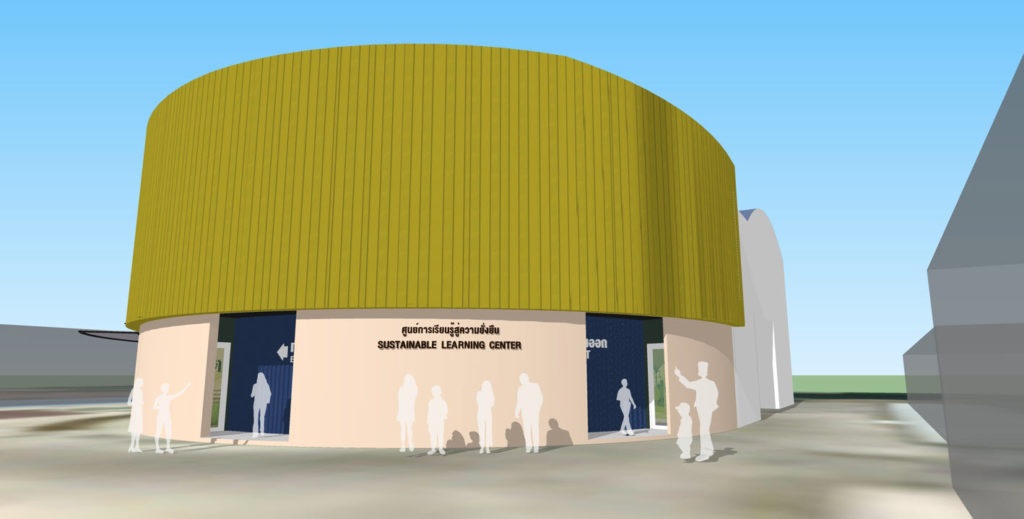
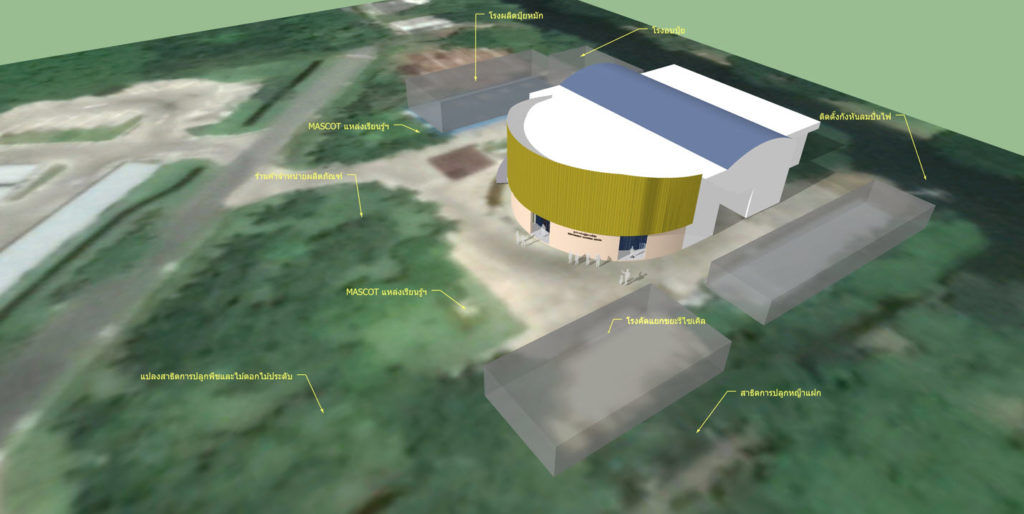
The surroundings of the building will be on display as a demonstration area showing the composting process, recycled waste banks, vegetable plots, energy from turbines, etc. They all are linked to the principle of sufficiency economy.
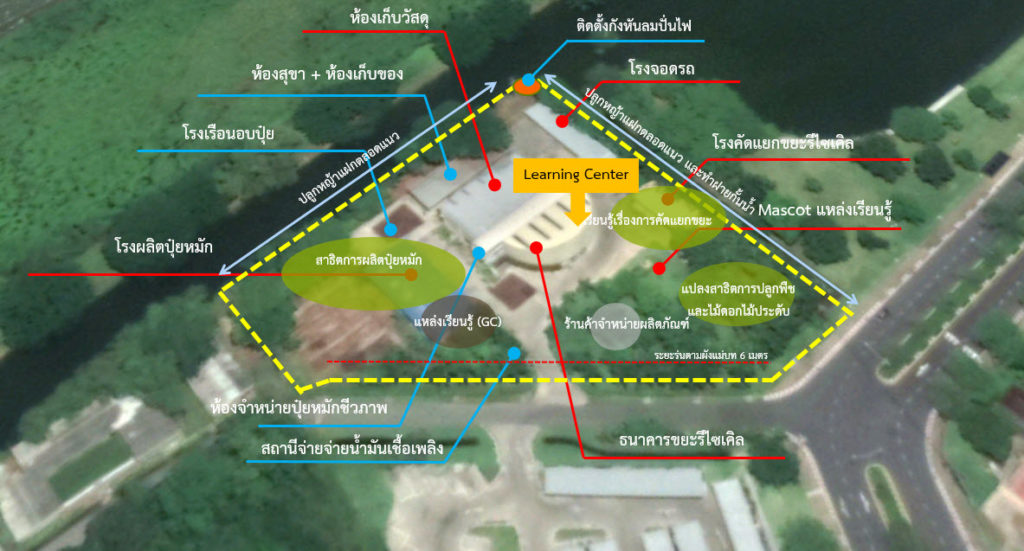
Inside the building, the exhibition is divided into 3 zones:
Zone 1: Moderation exhibits the story of the philosophy of sufficiency economy and the operation of the Khok Nong Na model.
Zone 2: Rationale exhibits the applicable concept of sufficiency economy into the form of sustainable university (SDGs in Campus) through varied medias, focusing on water management, clean energy, and green area management.
Zone 3: Good Immunity exhibits interactive tools to draw attention, instill knowledge and create an understanding on waste sorting and the 5R’s, and being a showcase for innovative products from other agencies.
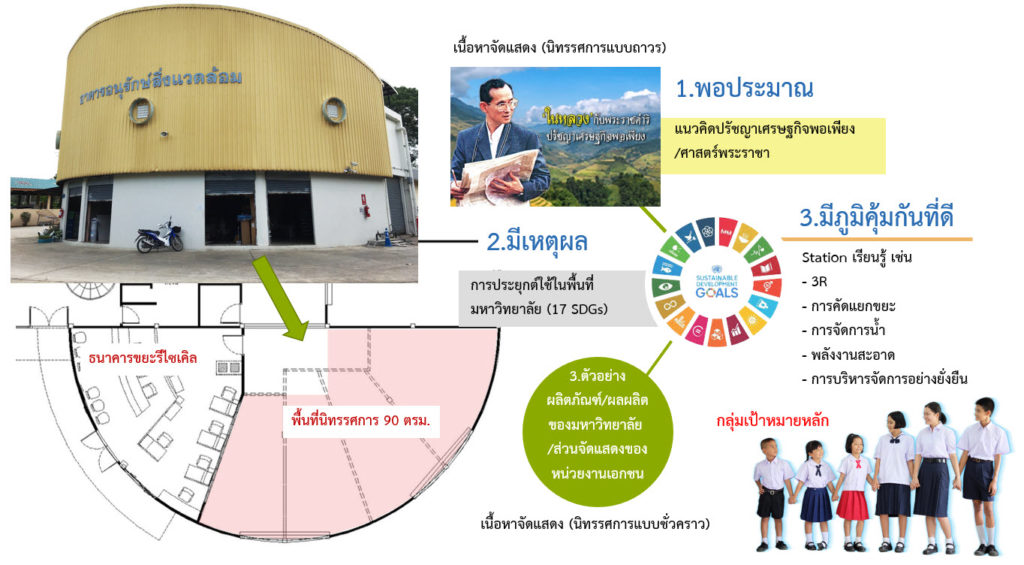
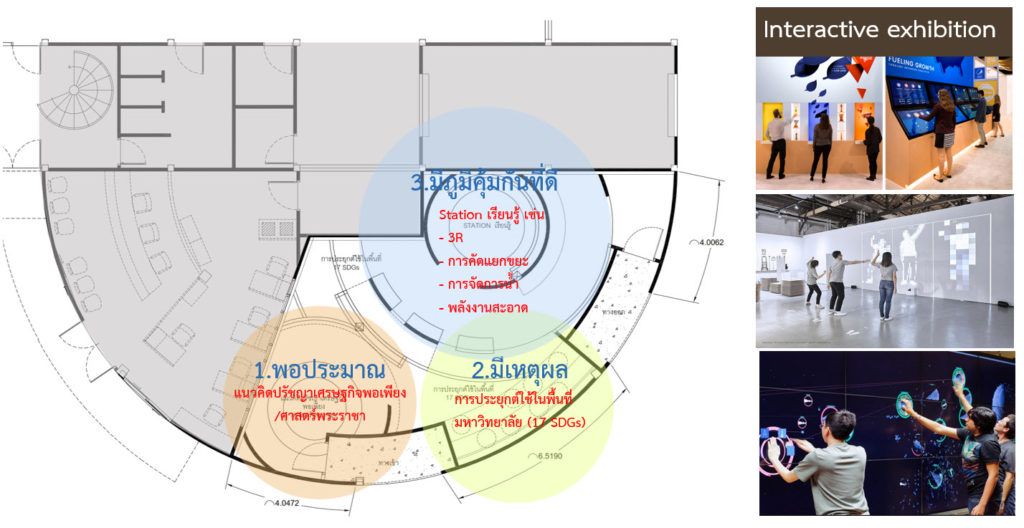
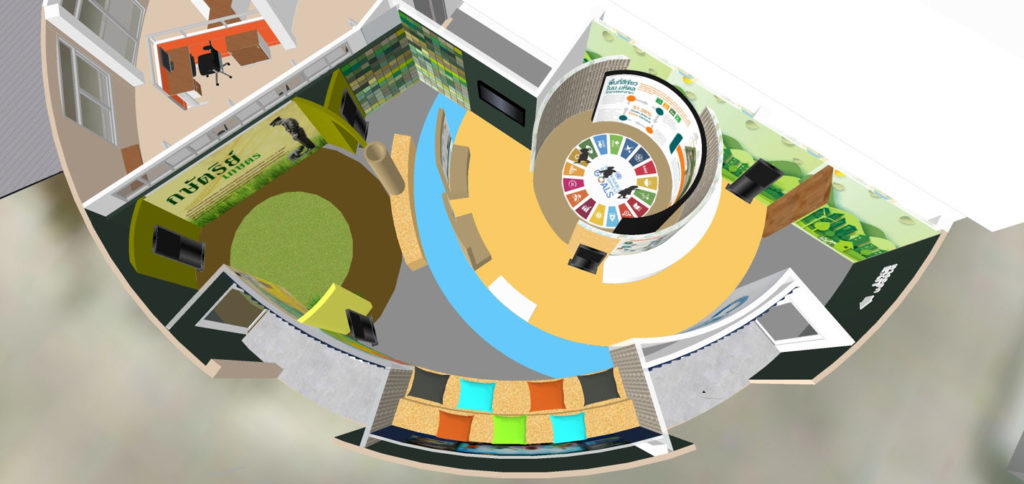
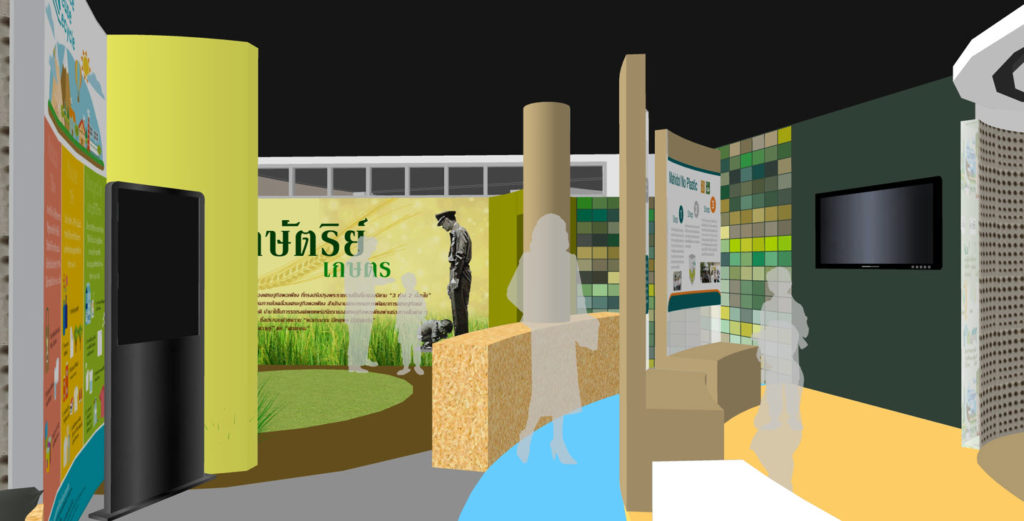
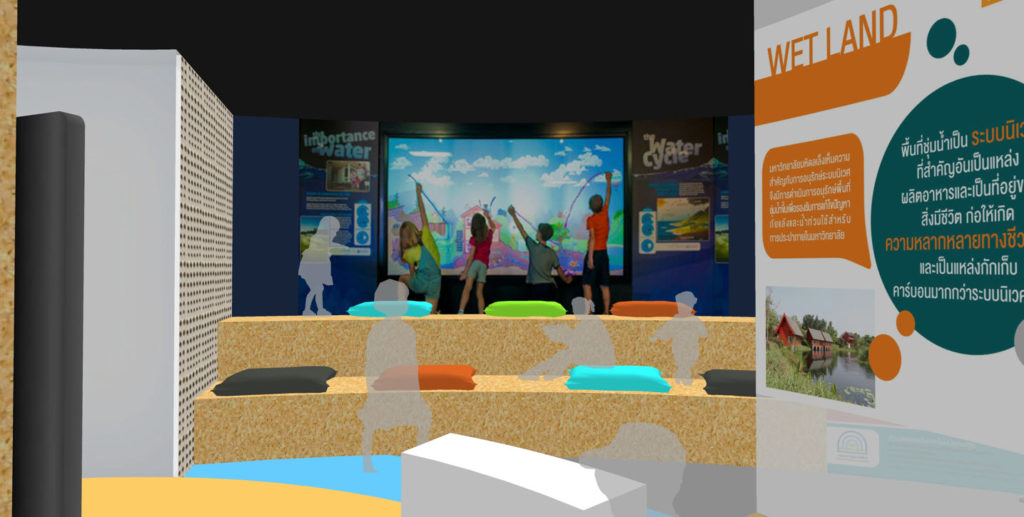
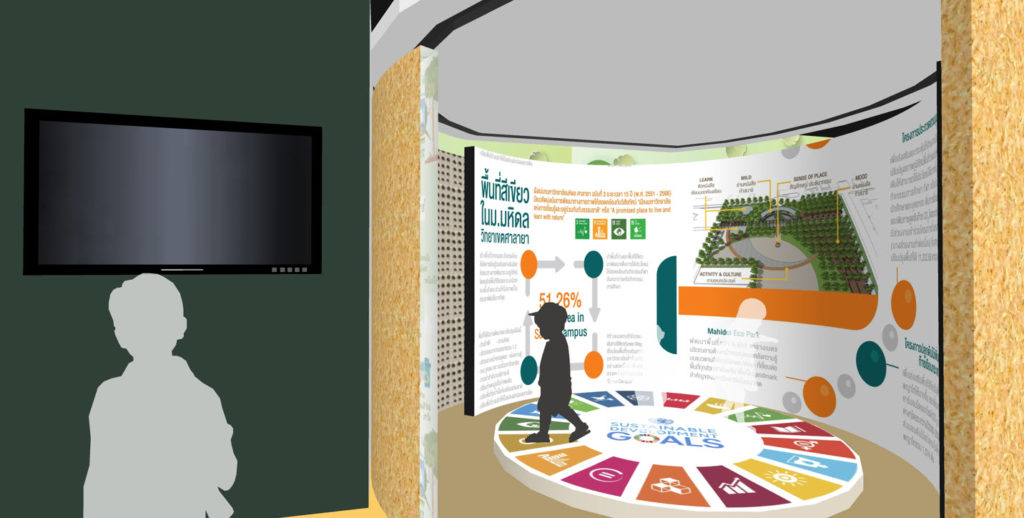
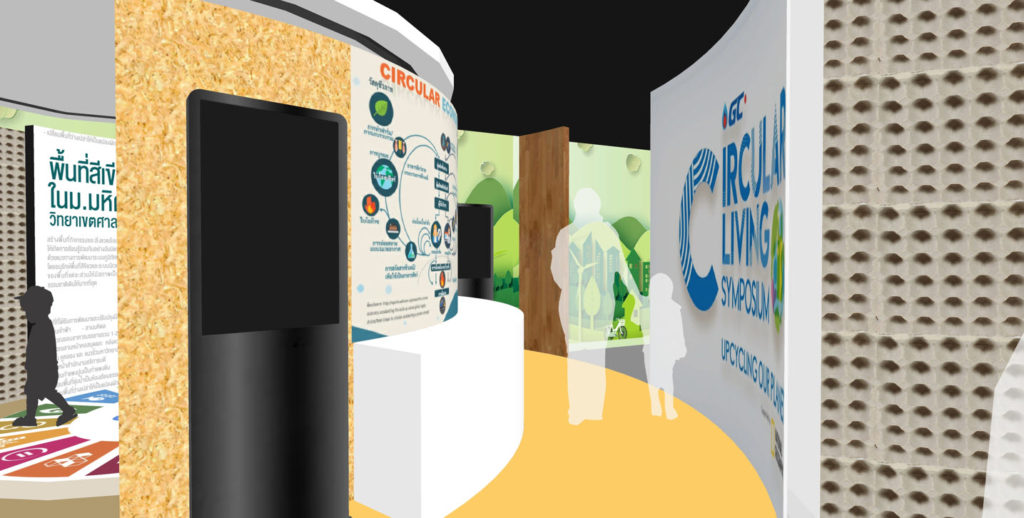
The university has allocated a budget of 2.1 million Baht to implement the project, with a project implementation period of 120 days. It is expected to be completed by the end of 2021 and will open for visitors around the beginning of 2022. The outcome expected from this project is knowledge gained from the application of sufficiency economy philosophy to the context of the university. The target audience includes students, staff, and the general public. This will help participants gain more knowledge and have a better understanding of the Sustainable Development Goals (SDGs), in accordance with Article 4. Quality Education, promoting education/knowledge/training and providing learning facilities to outsiders as well as Article 11. Sustainable Cities and Communities, promoting natural heritage, monuments or landscapes, or exhibiting local arts and museums.

